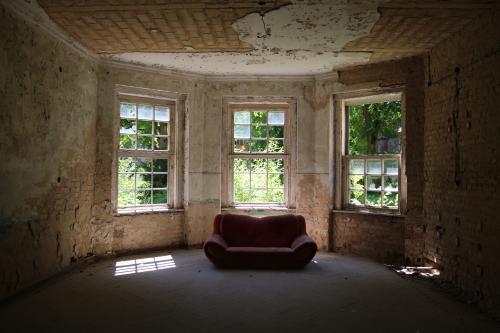Understanding Wall Deterioration: Causes and Remedies with White Cement

Your walls are the canvas upon which you build the story of your home. Over time, however, they may begin to show signs of wear and tear. Cracks, discoloration, and uneven surfaces can mar the beauty of your living space. In this article, we'll delve into the various factors that can cause your walls to deteriorate and explore how white cement can be the solution to restore them to their former glory.
The Culprits: What Causes Wall
Deterioration?
1. Moisture
Intrusion:
Moisture is one of
the most common adversaries of walls. It seeps in through leaks in the roof,
faulty plumbing, or even capillary action from the ground. When moisture is
absorbed by the walls, it can lead to efflorescence (the white powdery
substance that forms on the surface) and eventually cause the paint to peel
off.
2. Structural
Settling:
As a building ages,
it may experience slight settling or shifting. This can manifest in the form of
cracks on the walls. While small cracks are common, larger ones can be a sign
of a more serious structural issue.
3. Low-Quality
Construction Materials:
Substandard
materials used during construction can lead to poor wall quality. Inferior
bricks, inadequate mortar, or improper mixing ratios can all contribute to a
weakened structure.
4. Harsh Weather
Conditions:
Extreme weather
conditions, such as freezing temperatures or excessive humidity, can take a
toll on your walls. The expansion and contraction caused by temperature
fluctuations can result in cracks and other forms of damage.
5. Biological Growth:
Mold, mildew, and algae thrive in damp environments. When they take root in the porous surface of your walls, they can cause unsightly stains and, over time, weaken the structural integrity.
The White Knight: How White Cement Comes to the Rescue
1. Excellent
Adhesion:
White cement, known for its superior adhesive properties, forms a robust bond with various surfaces. When applied properly, it creates a seamless connection that helps to prevent future deterioration.
2. Waterproofing
Abilities:
One of the primary advantages of using white cement is its ability to resist moisture. By effectively repelling water, it guards against issues like efflorescence and paint peeling, which are often caused by moisture intrusion.
3. Structural
Reinforcement:
White cement is not just a cosmetic solution; it provides structural support. When used to fill cracks and gaps, it acts as a binding agent, restoring stability to the wall.
4. Aesthetic Appeal:
Beyond its functional benefits, white cement also enhances the visual appeal of your walls. Its smooth texture and clean, bright finish make it an excellent base for paint or other decorative finishes.
5. Versatility:
White cement can be applied to a variety of surfaces, including brick, concrete, and stone. This versatility makes it a go-to solution for a wide range of wall-related issues.
How to Apply White Cement for Wall Restoration
1. Surface Preparation:
Begin by cleaning the surface thoroughly. Remove any loose particles, dirt, or contaminants. This ensures optimal adhesion for the white cement.
2. Mixing the White Cement:
Follow the manufacturer's instructions for mixing the white cement. Use the appropriate water-to-cement ratio to achieve the desired consistency.
3. Application:
Apply the white cement evenly across the surface using a trowel. Pay special attention to cracks and gaps, ensuring they are adequately filled.
4. Curing Time:
Allow the white cement to cure for the recommended period. This typically takes a few days, but exact timing may vary depending on environmental conditions.
5. Finishing Touches:
Once the white cement has dried, you can paint or finish it according to your preference. This step not only adds an extra layer of protection but also enhances the aesthetic appeal.
In conclusion, understanding the factors that contribute to
wall deterioration is crucial for effective restoration. By addressing issues
such as moisture intrusion, structural settling, and low-quality materials, you
can prevent further damage. White cement emerges as a versatile and reliable
solution, offering benefits like excellent adhesion, waterproofing, and
structural reinforcement. By following proper application techniques, you can
breathe new life into your walls, transforming them into a canvas of beauty and
durability. Say goodbye to unsightly blemishes, and welcome walls that stand
the test of time.

Comments